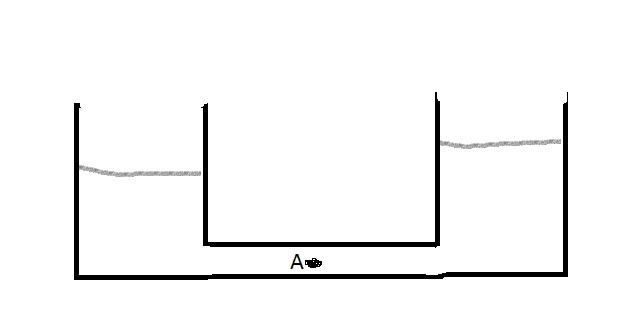For this case, i have a distribution chamber which is continuously filled with water with head 7m to feed a clarifier with head 6m. my concern is the pressure for point A in this drawing
 .
.
if it will be the difference between the two levels or will be the total head in the distribution chamber.
note that this system isn't static.

if it will be the difference between the two levels or will be the total head in the distribution chamber.
note that this system isn't static.

